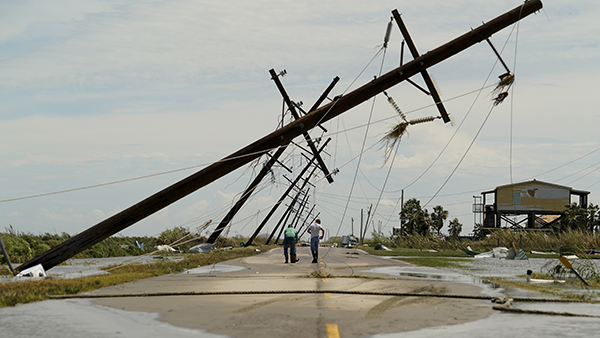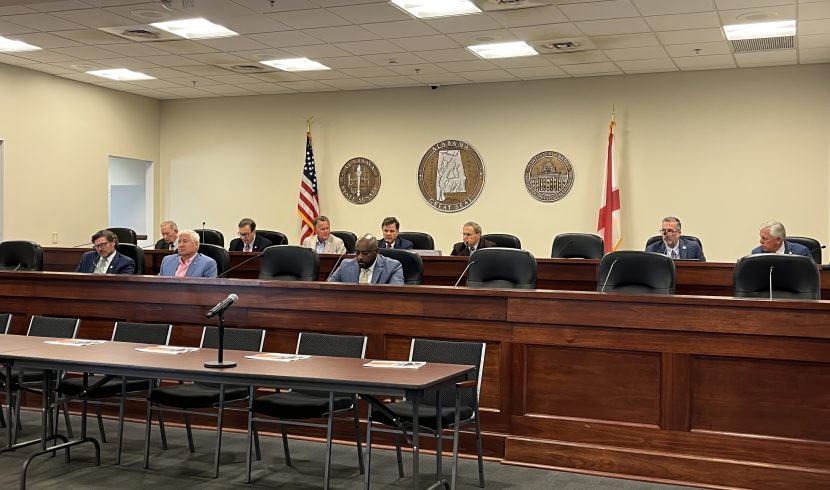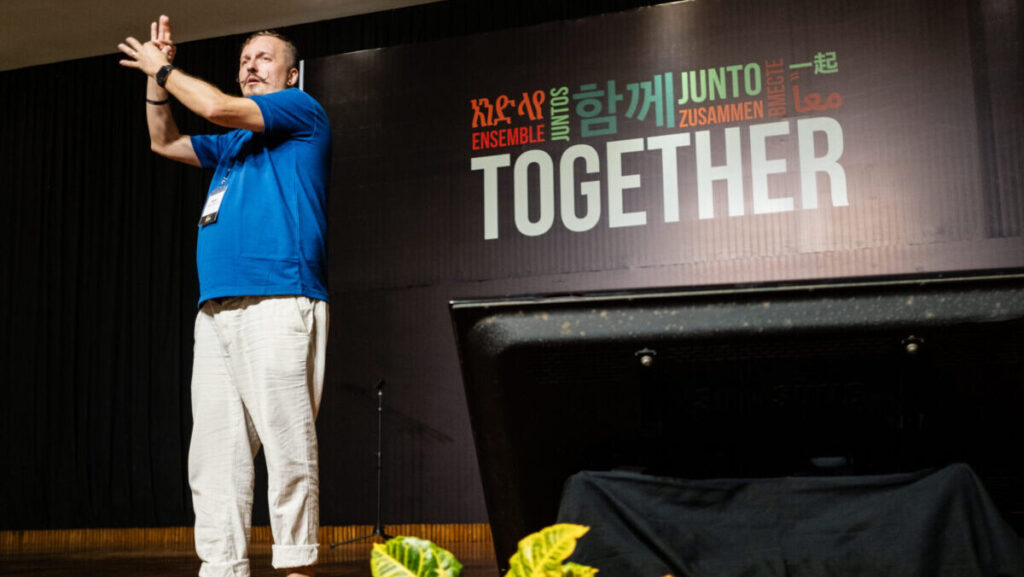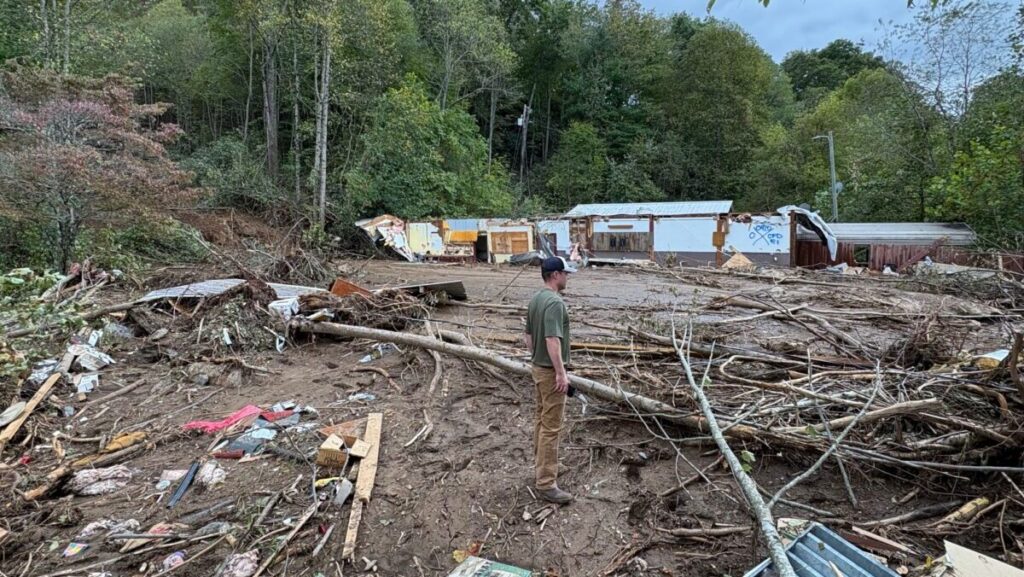Hurricane Laura made landfall Aug. 27 along the Louisiana-Texas state line as a Category 4 storm, causing flooding, downed trees and power outages in several states. At least six deaths were attributed to the storm as of this morning (Aug. 28), most from downed trees falling on houses.
Communities along the Gulf Coast experienced high water levels in the wake of Laura, the strongest storm to hit the U.S. this year.
Drone video in the Lake Charles, Louisiana, area shows water surrounding homes with large parts of their roofs peeled off, hotels with rooms exposed and giant trees uprooted. However, the damage was less than what was feared.
Federal Emergency Management Agency Administrator Peter Gaynor told ABC’s “Good Morning America” that the storm surge turned out to be less than what was forecast, but he expects significant wind damage to buildings once they do proper surveys of the disaster area.
Louisiana State Police Maj. Doug Cain said they received a report that the Isle of Capri’s riverboat casino broke from its mooring and was stuck against the Interstate 10 bridge in Lake Charles. A chemical fire also was reported in Lake Charles, sparking a shelter-in-place order from Louisiana Gov. John Bel Edwards.
Some of the cities and communities in Texas hardest hit by Hurricane Laura were near the Louisiana border. In Orange, Texas and nearby Newton County, Texas, many streets were blocked by large trees that had been toppled by Laura’s powerful winds.
Many homes had wind damage or damage from fallen trees. Nearly all businesses appeared to be closed as much of the area was still without electricity.
Inland communities and states felt the effects of the storm as well.
Flooding rainfall and damaging winds spread inland over central and northern Louisiana, Arkansas and parts of Tennessee, according to reports.
As the storm moved inland, a reported tornado tore part of the roof from Refuge Baptist Church in Lake City, Arkansas, 15 miles east of Jonesboro.
The Miami-based U.S. National Hurricane Center said the storm system is expected to continue moving into the mid-Mississippi Valley on Friday before reaching the mid-Atlantic States on Saturday. It says the system will dump heavy rains in spots, raising the risk of flash floods.
How to help
Those wishing to assist people impacted by the hurricane may contribute to Alabama Baptist Disaster Relief. ABDR will be working with state convention partners in affected states as they minister to people in the weeks and months ahead. Funds given through ABDR will be used only for relief efforts to help people. None of the funds are used for administrative or overhead purposes.
To give online, go to sbdr.org. Donations by check may be mailed to:
Alabama Baptist State Board of Missions
P.O. Box 681970
Prattville, AL 36068-1970
for: “Hurricane Relief”
Please note: Churches are asked to make their donations by check rather than by credit card in order to maintain the accuracy of church giving reports. Individuals may choose to donate online or by check as described above.






Share with others: